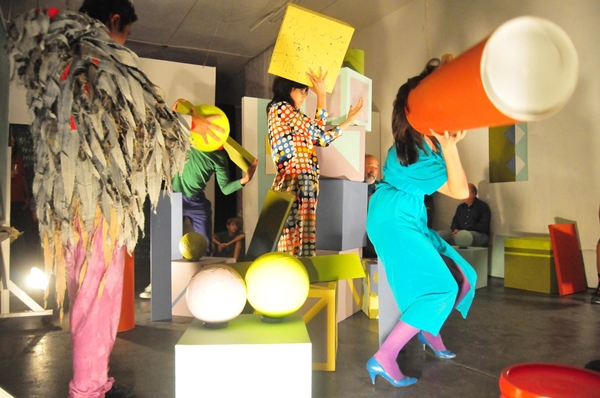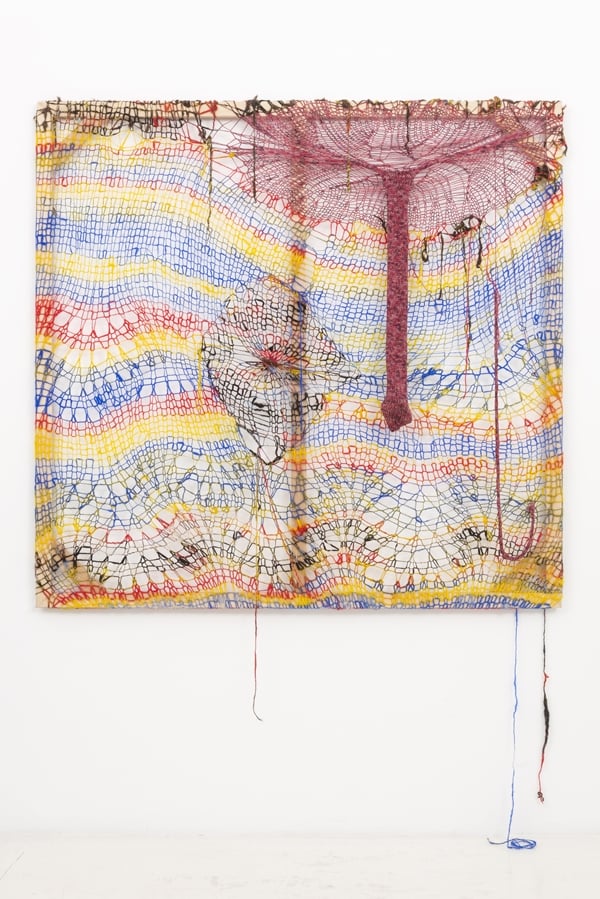Analysis
Hammer Museum’s ‘Made in L.A.’ Biennale Lacks Focus
Does the show's second edition do justice to the city's thriving art scene?

Does the show's second edition do justice to the city's thriving art scene?

Yasmine Mohseni

The Hammer Museum’s second biennial “Made in LA 2014” (June 15–September 17, 2014) takes on the daunting task of presenting the achievements of the city’s vast and heterogeneous contemporary arts landscape. The exhibition features new and existing work by 35 LA–based artists With the additional participation of over 100 artists in a selection of performance-based pieces, “Made in LA” presents not a cohesive exhibition but an assortment of shows within one large exhibition. The curatorial approach favors fluidity over stringent thematic delineations or chronological arrangement.
The subtext of “Made in LA” is the Hammer’s mission statement, a perennial message calling for the transformation of the museum’s role in society from a stodgy institution to a dynamic space seeking to engage the general public in innovative ways. For example, the Hammer was the first contemporary arts museum in the US to establish a Public Engagement department dedicated to programming that directly engages the public through performance and interactive activities, thus creating a symbiotic relationship between museum and visitor. The notion of the interactive is omnipresent throughout the exhibition. At the museum entrance, kiosks outfitted with electronic tablets invite visitors to vote for the Public Recognition Prize, with audience members determining which artist will receive a $25,000 prize. While this invokes reality shows such as American Idol, it does encourage visitors to engage with the work in a more direct manner. Two other prizes are linked to this exhibition, the prestigious $100,000 Mohn Prize and the Career Award for $25,000, neither of which are determined by the general public but by various committees.
“Made in LA” underscores the city’s inclusive and experimental artistic community by highlighting collaborative working methods of artists. Artist-run spaces and collectives such as the James Kidd Studio, Tony Greene: Amid Voluptuous Calm, Los Angeles Museum of Art, KCHUNG radio (which broadcast live in the museum lobby during the opening), and Public Fiction draw on diverse multimedia practices to create exhibitions within the exhibition.

Channing Hansen, Polytope Soap (2013).
Photo: Joshua White.
One room that captured the audience and drew a steady stream of people contained art-world darling Samara Golden’s multimedia The Fire Place (2013) and mixed-media Busts (2010). The clever appeal of this room is its interactive nature: In It’s so classic to be wrong (2010), the viewer must stand between a sculpture and a camera in order to view the piece; thus the viewer is essential to the reception of the work. In Busts (2011–), an ongoing work, Golden uses dolls from thrift stores to create portraits. With a video camera, viewers look through a crowd of doll busts towards a monitor hooked to a camera feed that displays viewers’ faces. A steady line of people waited excitedly to see their own faces superimposed on the dolls’ busts, underscoring the museum’s interactive mission while playing to Angelenos’ desires to see themselves onscreen. In contrast to Golden’s piece, a selection of beautifully contemplative works invite the viewer to slow down.
Ricky Swallow’s small, pared-down monochromatic bronze sculptures (2013–2014) displayed on plinths and mounted on the wall invite the viewer to contemplate each one. Swallow’s quietly poetic work comes into dynamic dialogue with Lecia Dole-Recio’s large-format colorfully geometric untitled works on paper from 2013–2014. In a nearby room, visitors speak in hushed voices upon entering the chapel-like space displaying Marcia Hafif’s series of small-format monochromatic oil paintings Inventory: Shade Paintings (2013). These works are part of an ongoing series started in the late 1970s. Hafif’s work continues to experiment with the materiality of the medium and its continual relevance in the age of multimedia art.
“Made in LA 2014” casts a very wide net—perhaps a bit too wide. The intention is good: The museum features works by native Angelenos and national and international transplants, all of whom shape LA’s dynamic artistic environment, focused on experimental practices that seek to break away from art historical doctrine. With standout works by the likes of Emily Mast, Kim Fisher, and Tala Madani, to name a few, it’s hard not to admire the ambition behind the show. But does such an expansive show do justice to the individual works on display? Or does the sheer volume of it drown too much of it out? Visitors seemed a bit overwhelmed and confused by the show, with one prominent curator commenting that she couldn’t make heads or tails of it. Perhaps scaling the show down or offering multi-part exhibitions throughout the year would allow viewers to fully appreciate each work.